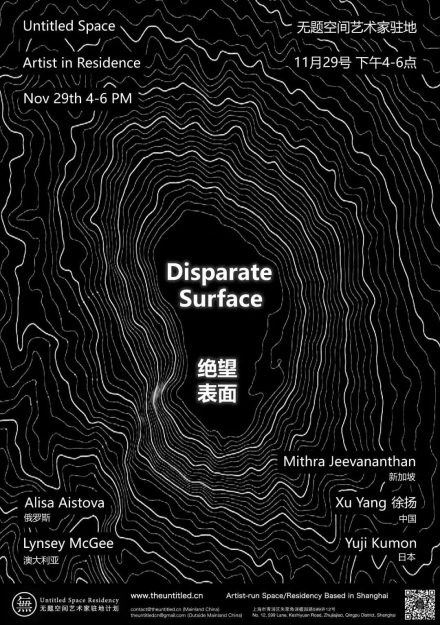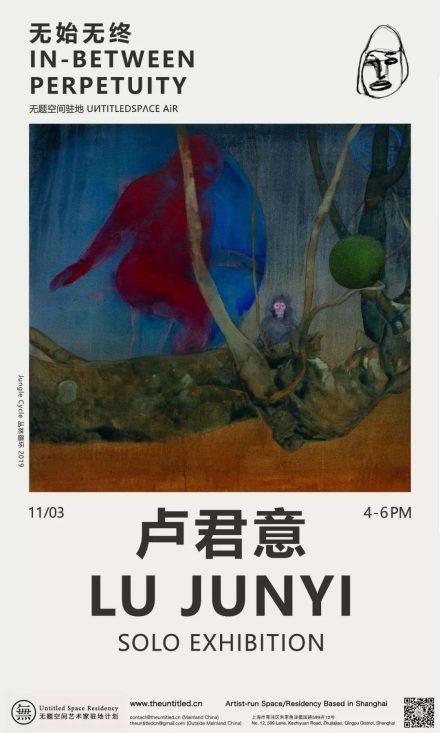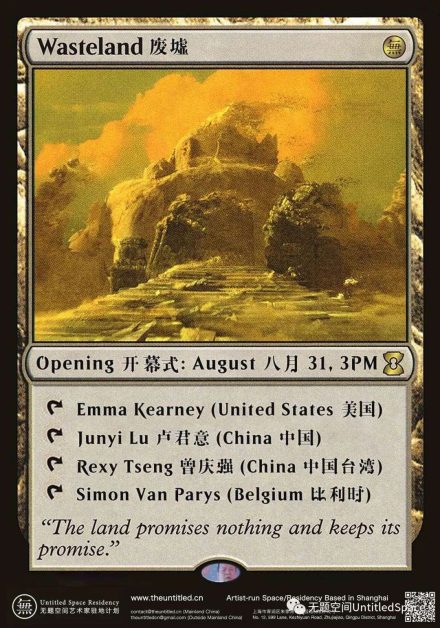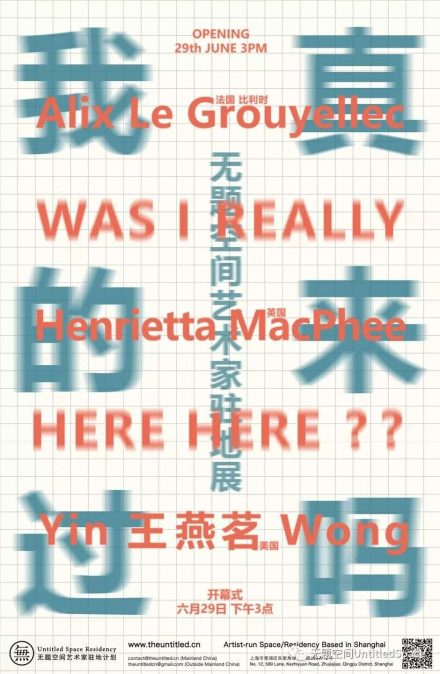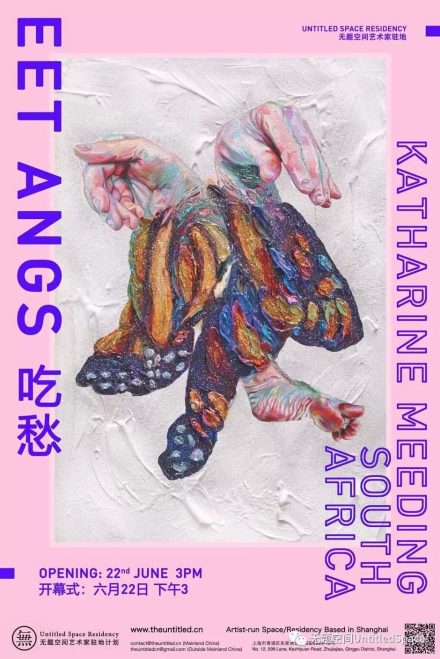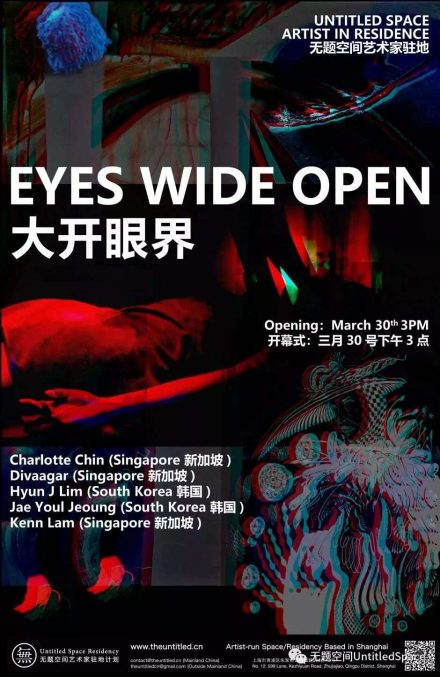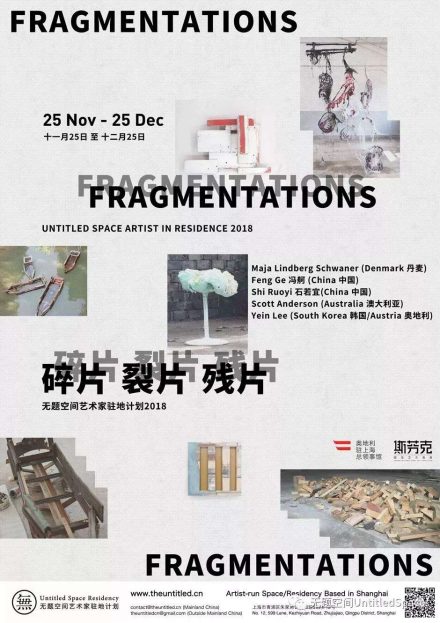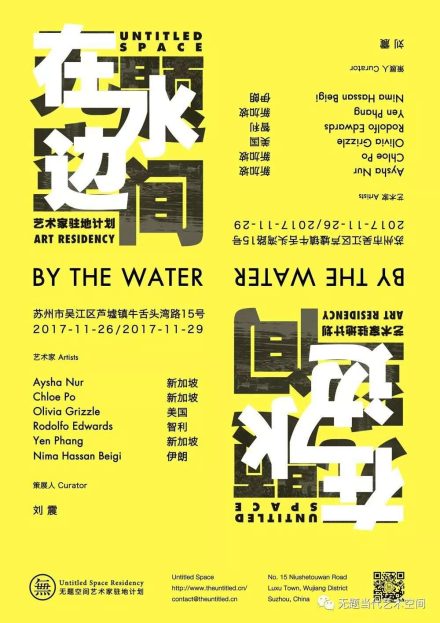2025 November Artists in Residence
Residency Works Open Day
November 23 (Sunday) 15:00, 2025
“绘制不稳定”汇集六位驻地艺术家在上海所展开的多元实践,回应城市、身体、物质与感知在当下所呈现的持续漂移状态。从监控系统的数字噪声到城市路径的自发生成,从景区与居住区的隐秘切面到被想象出的化石生态,再到地铁记忆的抽象纺织与液体循环的物质转换,本次展览探讨的是一种无法被完全捕捉的现实结构。
在这些作品中,地图不再是一种精准的描述工具,而是一种感知方法:由偶发的故障、时间的阈限、材料的变形、记忆的折返与自然力量的连续流动所组成。艺术家们以视频、装置、纺织、陶土与水等媒介,共同描绘出一个不断生成、易碎而开放的世界 – 一个以不稳定为常态,以漂移为节奏的世界。
“绘制不稳定”关注的并非控制、归类或确定,而是对那些正在出现、即将消失、介于其间的状态保持敏感。展览意图展开一种新的观察方式:在变化的缝隙中,在结构的偏移处,在事物的临界点上,重新理解我们与城市、物质及彼此的关系。以此意义而言,“绘制”并非完成,而是一种持续进行的行动;不稳定不是例外,而是当代的基本条件。
“Mapping the Unstable” brings together six resident artists whose practices reflect the shifting conditions of city, body, material, and perception. From digital noise flickering through surveillance systems to the spontaneous emergence of urban pathways; from the hidden thresholds between tourist zones and lived neighborhoods to speculative fossil-like ecologies; from fragmented textile cartographies to water’s cyclical transformations—this exhibition investigates structures of reality that resist capture and remain in motion.
Here, mapping is no longer a tool of precision, but a method of sensing. It is shaped by glitches, temporal thresholds, material mutations, returning memories, and the continuous flow of elemental forces. Through video, installation, textile, clay, and water-based processes, the artists collectively sketch a world that is perpetually forming—fragile, porous, and open-ended. A world where instability is not an interruption but a condition; where drift becomes its defining rhythm.
“Mapping the Unstable” does not seek to stabilize, classify, or resolve. Instead, it remains attentive to states that are emerging, dissolving, or suspended in between. The exhibition proposes a renewed mode of observation—one that finds meaning in transitional moments, structural shifts, and liminal edges, rethinking how we relate to the city, to matter, and to one another. In this sense, mapping is not a conclusion but an ongoing gesture; instability not an exception but the very premise of the contemporary.
Anna Barlik
一切都始于一个点 – Wassily Kandinsky轻声提醒我们:形式从未固定,只是不断展开。在我“Connections”系列的最新作品中,这个单一的点延伸为漂移的线条,随着城市不可预测的节奏弯曲。线条的子部分 – 街道、高楼、下穿通道、隐藏的庭院 – 随着人群的流动而脉动,这些人像活水般移动,在占据空间的同时重组了城市的形态。
原本是简单生命线的点,分裂为无数微小转折:短暂的偶遇、路径的改变、意外的接近。线条随意延伸 – 穿过情境、关系和空间,每一步都在重新组合。作品遵循这种不稳定性,描绘维系城市的无形编舞。从一个点开始,整个世界生成;从一条线开始,无数只能在过渡中显现的瞬间组成星座。
正如中国传统水墨让笔随意游走,水与纸自然引导结果,这些作品也接受线条不可预测的延伸,尊重联系出现、消散、再生的方式。从一个点开始,世界展开;从点的运动中,生命缓慢流淌,由每一次转折塑造。
Everything starts from a dot – Wassily Kandynski’s quiet reminder that a form is never fixed, only unfolding. In these last pieces from my Connections series, shaped across residencies in New York and now in Shanghai, that single point stretches into a drifting line, bending with the unpredictable rhythm of the city. Its subparts – streets, towers, underpasses, hidden courtyards – pulse with the flow of people who move like living currents, shifting the form even as they inhabit it.
What begins as a simple life line fractures into countless tiny turning points: brief encounters, redirected paths, accidental proximities. Threads lead where they choose—through situations, relations, and spaces that reassemble themselves with each step. The work follows this instability, mapping the unseen choreography that holds these cities together. From one dot, a whole world of movement emerges; from one line, a constellation of moments that could only appear in transit.
Just as traditional Chinese ink painting lets the brush wander, letting water and paper guide the outcome, these works accept the unpredictable leading of threads, honoring the way connections appear, dissolve, and reform. From one dot, a world begins. From its movement, a life unfolds – quiet, fluid, and shaped by every turning point along the way.
综合材料 Sculptural work – with an unfolding and visual connection to “the flow” work – steel wire and polyester
综合材料 Series of 6 orange works – steel powder coated
Bárbara Jasmins是葡萄牙多学科艺术家。她的创作源自对隐藏现实的兴趣 – 那些超越人类感知界限的存在 – 不将其视为征服对象,而是视为一种相遇的空间。在驻地期间,这种感受通过与当地环境、材料和历史的直接接触而愈发强烈。在与陶土创作的过程中,形态逐渐浮现,仿佛唤起某种生物的痕迹 – 碎片、化石、未定义存在的残留物。一片推测性的、几近神秘生物学的场域逐渐形成,仿佛艺术家在挖掘内在考古,发掘另一个世界的可能性 – 一个悬浮在考古与科幻之间的虚构世界,绿色天空或绿幕构成背景。在装置阶段,她产生了隐藏这些痕迹的冲动。可见之物只是被隐藏物的回声。这种反转博物馆逻辑的做法:传统用于揭示的展陈机制,在这里成为遮蔽机制。这个想象中的乌托邦形成了作品的语境,探索显现与隐藏、神话与物质之间的张力,为那些徘徊在阴影中的存在赋予形态。
Bárbara Jasmins is a Portuguese multidisciplinary artist. She develops her work from a fascination with hidden realities – those veiled beyond the limits of human perception — not as something to be conquered but as a space of encounter. During the residency, this sensation intensified through direct contact with the local environment, its materials, and its history. While working with clay, forms began to emerge that evoked the traces of a creature—fragments, fossils, remnants of something undefined. A speculative, almost cryptozoological terrain took shape, as if the artist were excavating an inner archaeology, unearthing the possibility of another world. A fictional world with a green sky – or greenscreen – suspended between archaeology and science fiction. During the installation phase, an impulse arose to conceal these traces, to contain them. This is a deliberate inversion of the museological device: what traditionally serves to reveal becomes, here, a mechanism for hiding. The visible becomes merely an echo of what remains veiled. This imagined utopia formed the backdrop for a body of work that investigates the tension between revelation and concealment, the mythical and the material, giving form to that which insists on lingering in the shadows.
综合材料 Metal, acrylic box, pure silk, porcelain clay, metal wire, video SD 720p, 3’50” loop
这件视频作品通过photobashing技法创作,现场拍摄了超过 250 张照片。缓慢的全景滚动反映了景观的渐变,从朱家角景区入口开始,延伸至居民区。
时间对这里尤为重要:店铺开门时间和游客流量会极大改变对这些场所的体验。艺术家选择通过独行、私密的视角,揭示景区的幕后面貌。
Camille Castillon 原本是一位画家,习惯通过照片拼接创作绘画,作品总是源于对场所敏感的体验。此次,她将绘画的感知方式转移到视频媒介,形成另一种沉浸体验。
Video created through photobashing, which required more than two hundred and fifty on-site photographs. This slow panoramic scroll reflects the gradual transformation of the landscape, starting from the entrance of the Zhujiajiao Scenic Area and leading up to the residential district.
Time of day is extremely important here, as shop opening hours and the flow of visitors radically change the experience of these places: the artist chose to reveal the behind-the-scenes aspect of this scenic space through a solitary, intimate, and privileged journey.
Camille Castillon is a painter and usually relies on photobashing to compose her paintings, which are always created from a sensitive, lived experience of a place. Here, she trades large formats for another kind of immersion: that of video.
From Zhujiajiao’s Scenic Area to the Resident Part, from 6 to 7am
视频 Video
7’23
2025
我在上海探索不同区域来进行我的视频项目。那一天,我在一个区域拍摄了城市景观,然后乘地铁返回工作室。地铁里,有几块显示屏重复播放着城市公告、地铁乘车规范和各种广告。但有一块显示屏引起了我的注意 – 它展示的是失真的、像素化的画面,被数字噪声干扰。
在一个充满监控摄像头的城市里,我仿佛发现了一个隐藏的系统故障。这些噪声创造出美丽而生动的抽象图像,它们不可复制、不可预测,只能出现一次。系统故障产生的图像异常鲜明、活力十足,几乎像是在演奏“视频音乐”。在显示屏上模糊的倒影中,我体内的生物噪声 – 塑造我生命的 DNA 错误 – 似乎柔和地与这些失真的画面重叠。
I was exploring different parts of Shanghai for my video project. That day as well, I filmed the cityscape in one area and got on the metro to return to the studio. Inside the train, a few monitors were repeatedly playing city announcements, metro etiquette, and various commercials on a loop. But one monitor stood out—it was displaying distorted, pixelated images that were disrupted by digital noise.
It felt like I had discovered a hidden system error in a city filled with CCTV cameras. The noise created beautiful and vibrant abstract images on the screen, which were unrepeatable, unpredictable, and could appear only once. The images created by the system error were strikingly beautiful and vivid, almost like Video Music. In my blurred reflection on the monitor, the biological noise within me – errors in my DNA that have shaped my life – seemed to softly overlap with the glitched images.
单通道视频 single-channel video
Supported by Busan Cultural Foundation
“河流的流动从不停止,水面从未停留。水泡漂浮在水池表面,破裂、再形成,从不滞留。”
受自然现象启发,Ophélie 探索物质行为及其在机械和物理作用下的自我构造能力。她的实验研究调查我们如何感知状态变化,以及如何促成这种生成。Ophélie 观察水的运动及液体间的相互作用,探索物质的扩散、转化和流动。每一次转化都是有机且不稳定的形式,是新生生命的显现。
《Soundscape》是一件由建筑材料和水构成的装置,水作为城市固有元素,被用于捕捉其连续流动,并探讨时间性:水滴落下又消失,但流动仍持续,循环重新开始。重力成为形态生成的原则。Ophélie 寻找流动被打断的瞬间:在这里,运动停止,物质转化,并漂向消逝。正是这种频率与干扰时刻,成为她捕捉的目标。
她的创作依赖自主的重复机制。重复产生循环,循环生成消耗,物质锈蚀、饱和、膨胀;液体被耗尽。作品以循环展开:每一次结束都开向新的开始。
她探索生命与非生命、运动与捕捉、人类与元素的界限。作品存在于物质转化的阈限空间中。Soundscape:如果运动也能成为声音,会是怎样?
“The flow of the river never ceases, and the water never stays the same. Bubbles float on the surface of pools. Bursting, re-forming, never lingering.”
Guided by natural phenomena, Ophélie explores the behavior of matter and its ability to structure itself under mechanical and physical forces. Her experimental research investigates how we perceive a change of state and how such an emergence can be produced. Ophélie observes the action of water and the interaction between liquid. How a matter spreads, transforms, and mutate into a fluid. Each transformation became organic, and unstable forms in mutation, as an emergence of nascent life.
Soundscape is an installation made from construction materials and water, an element inherent to the city. It captures the continuous flow of water and explores its temporality: a drop falls and disappears—yet the movement continues, and a cycle restarts. Gravity acts as a principle of form. Ophélie seeks the point of contact where the flow is interrupted: there, movement stops, matter transforms, and drifts toward disappearance. It is this frequency, this moment of interference, that she aims to capture.
Her work relies on autonomous, repetitive mechanisms. Repetition produces a cycle; the cycle generates exhaustion. Matter rusts, saturates, and engorges; the liquid is spent. Her work unfolds as a cycle: each ending opens into a beginning.
She investigates the boundaries between the living and the inert, between movement and its capture, between the human and the elemental. Her work exists in these liminal spaces where matter transforms. Soundscape: what if movement became sound?



《Where Are You Getting Off?》以上海地铁的日常体验为出发点。作品由二十块纺织碎片组成,每一块灵感来自一条地铁线路,形成一幅非精确、基于记忆的地图。地铁线路并非图解,而是抽象化:模糊的边界、断裂的路径、被距离和时间塑造的拉伸与折叠。
该装置反映了艺术家八年后回到上海的状态 – 城市持续扩张、生成新的方向,而身体仍保留着早先的节奏与路径感。这种变化与身体记忆之间的微妙错位,正是作品的核心。
作品标题《Where Are You Getting Off?》既是地铁中常听到的提问,也是一种更安静的自我定位询问:在经历新的体验与方向时,你是否仍知道自己的“站点”在哪里?
Where Are You Getting Off? takes the everyday experience of the Shanghai metro as its point of departure. Composed of twenty textile fragments—each inspired by one of the city’s metro lines—the work forms a non-precise, memory-oriented map. The routes appear not as diagrams but as abstractions: blurred edges, fractured paths, stretches and folds shaped by distance and time.
The installation reflects the artist’s return to Shanghai after eight years away— a moment when the city continues to expand and generate new directions, while the body still carries the rhythm and pathway-sense of an earlier time. This subtle dissonance between change and embodied memory lies at the heart of the work.
The title Where Are You Getting Off? is both an ordinary question heard inside a metro car and a quieter inquiry into one’s sense of self-location: As your world opens up through new experiences and new directions, do you still know where your stop is?
Where Are You Getting Off?
Mesh fabric, linen, wool, lace, thread, nylon, wire, paper
141.7I” × 94.5I”; 11.4“ × 7.9”; 16.9” × 7.9”; 20.5” × 7.9”


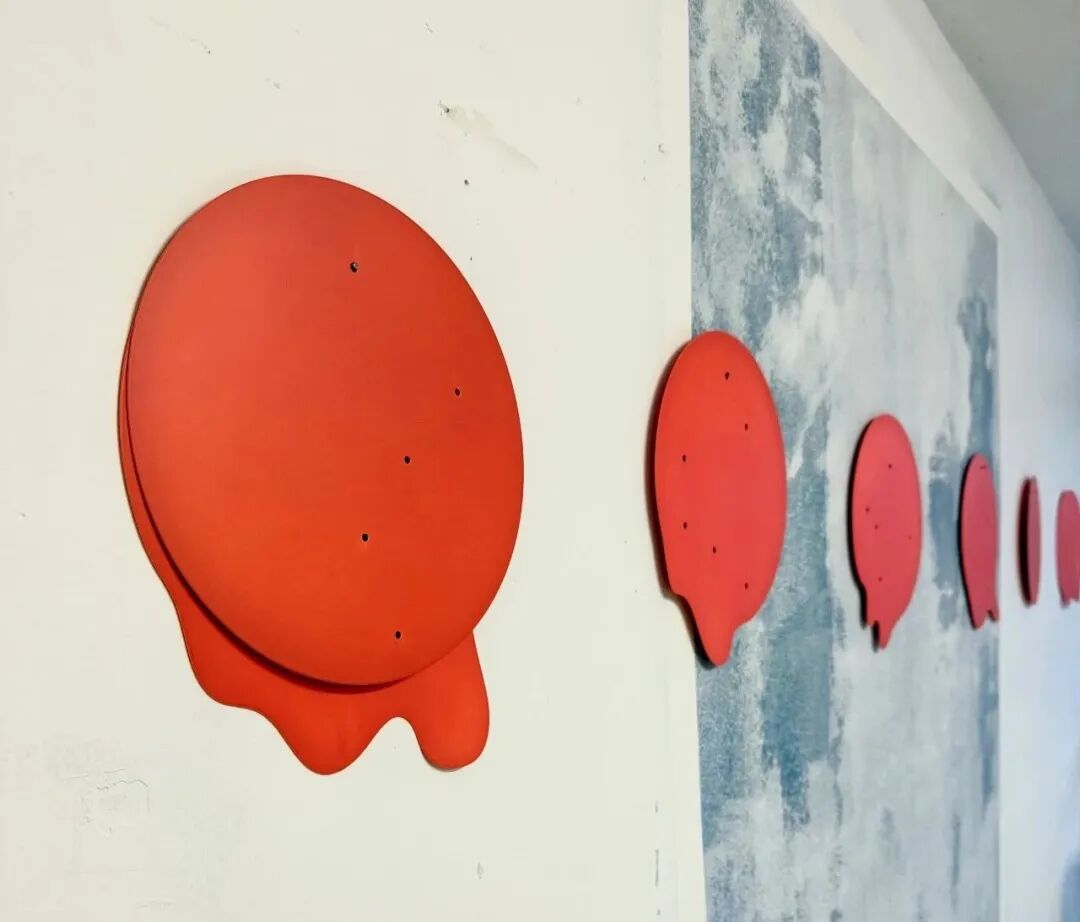




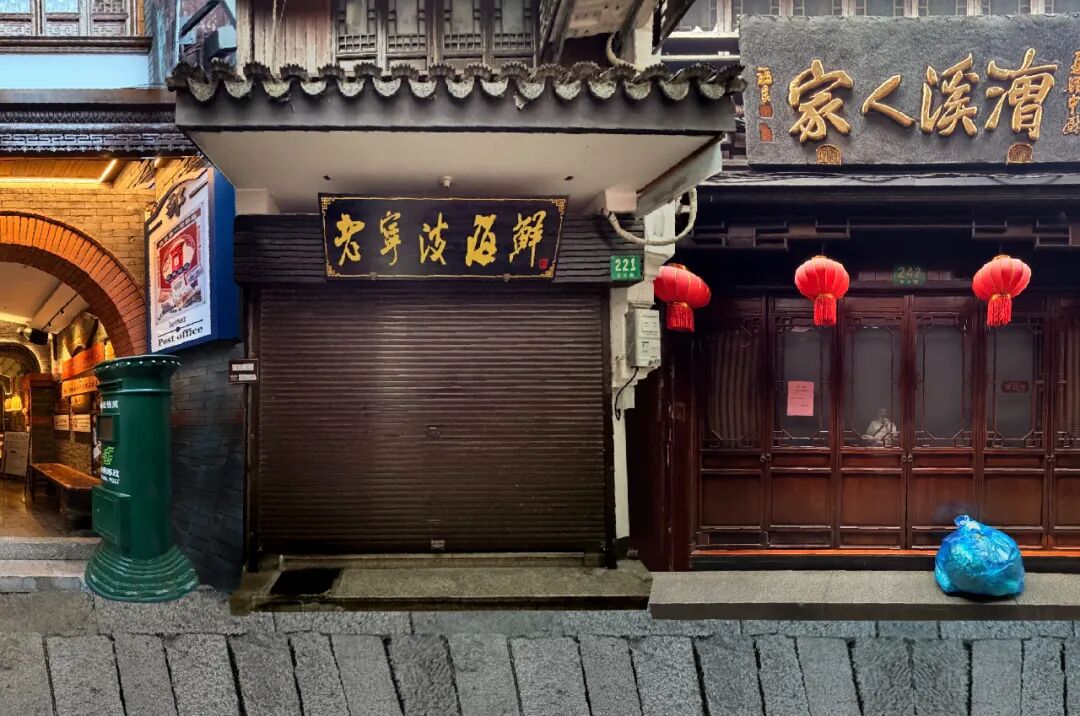
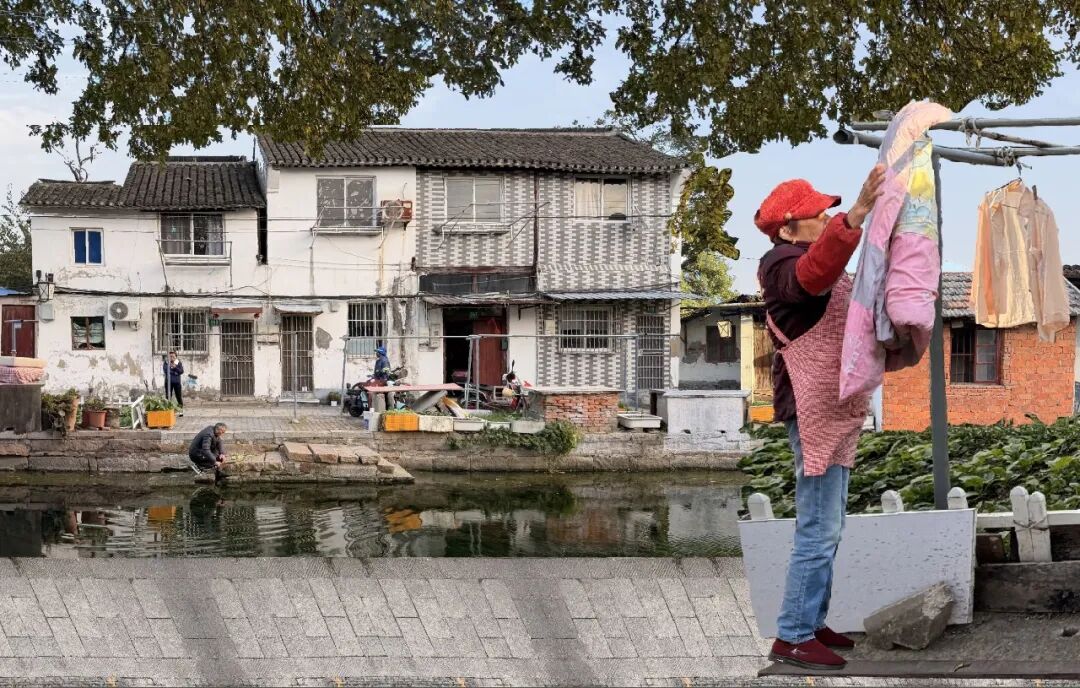
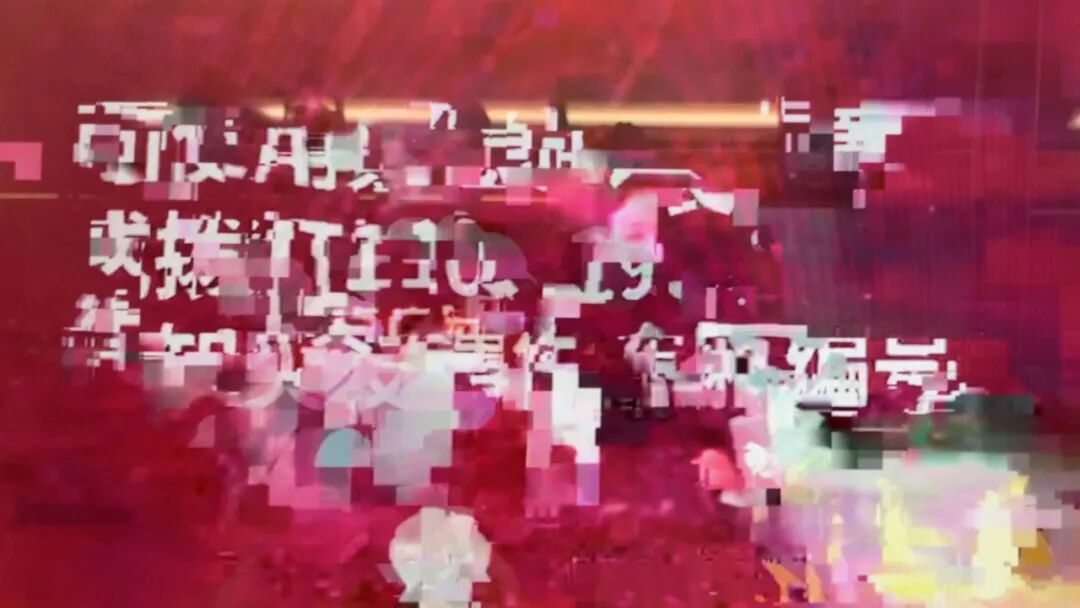
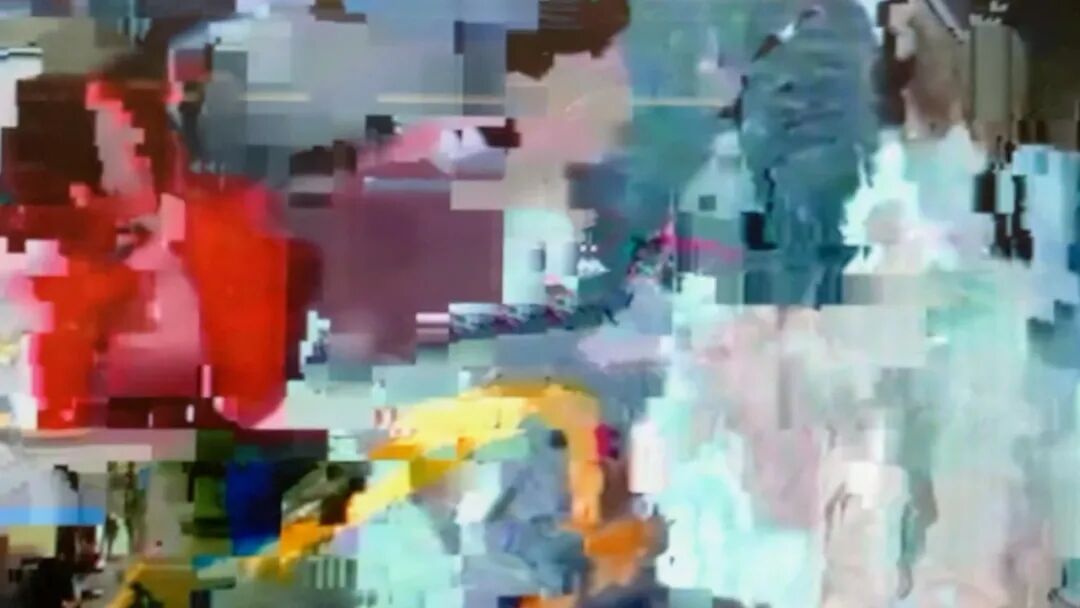

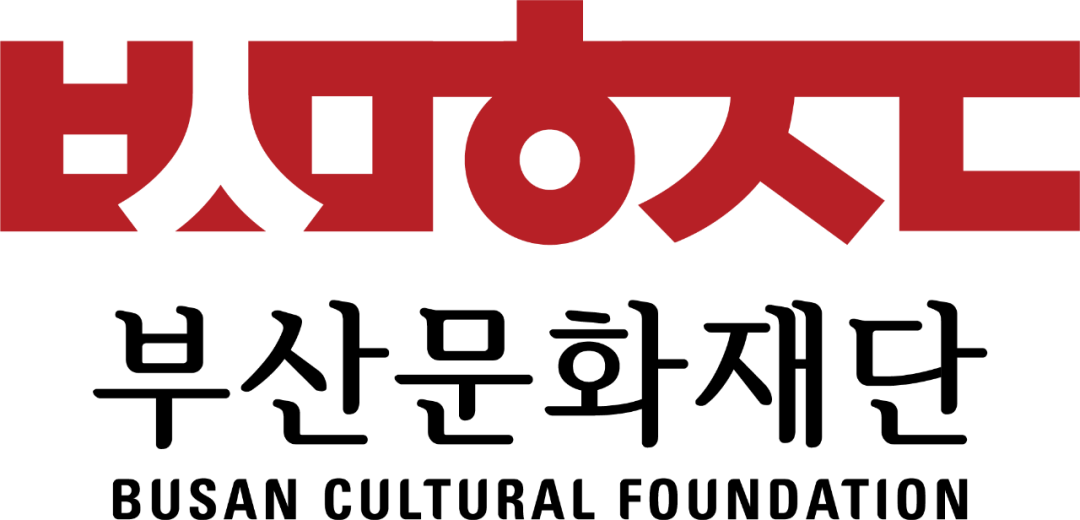






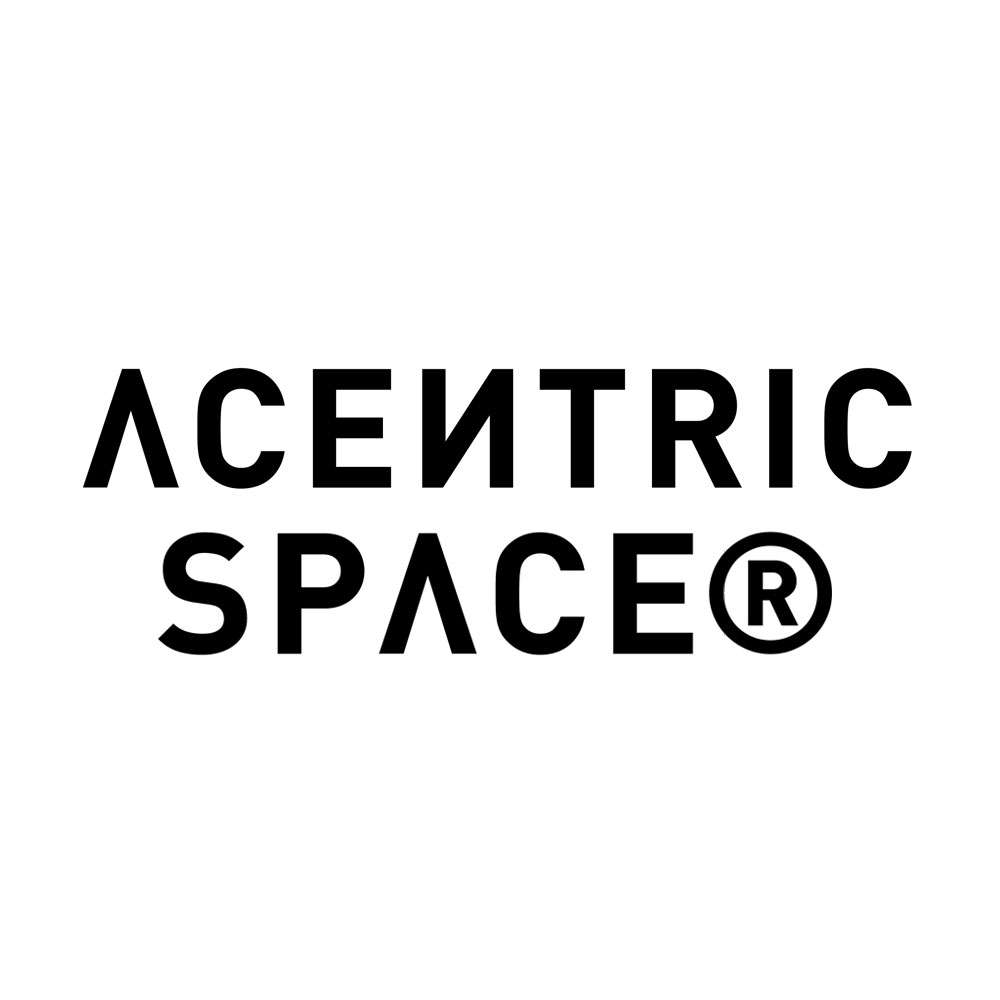
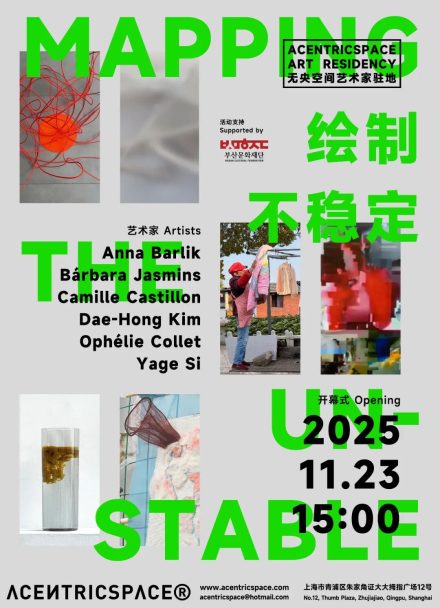

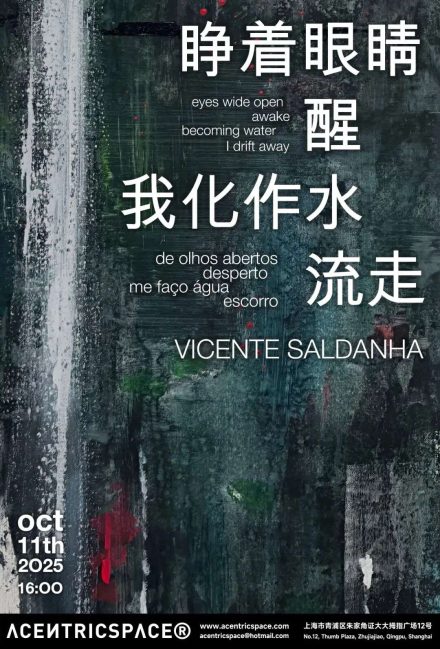
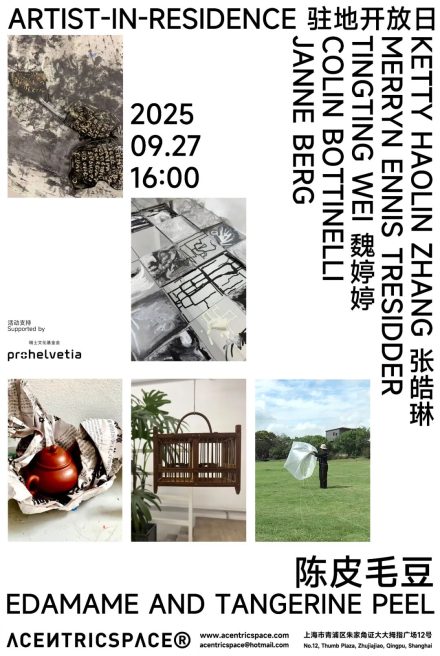
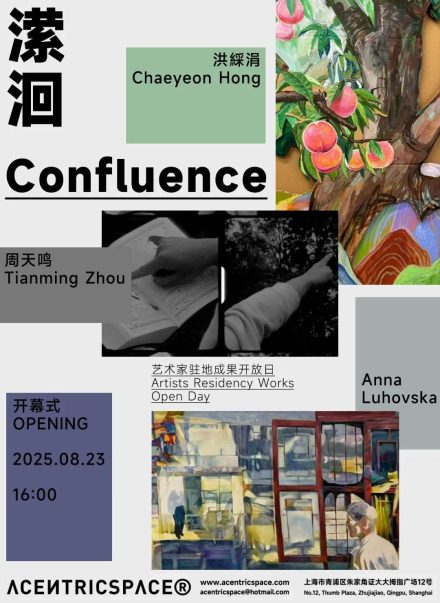
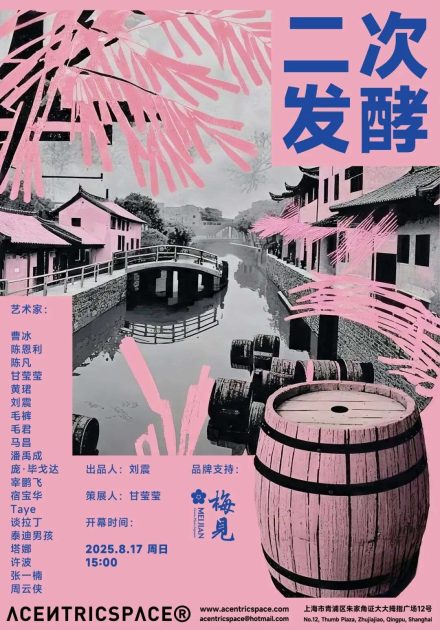
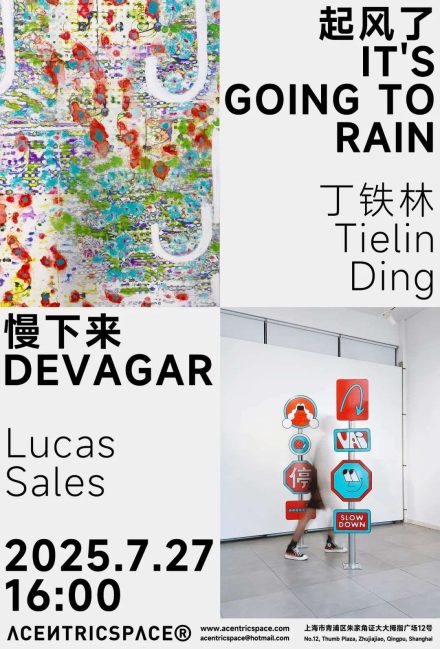

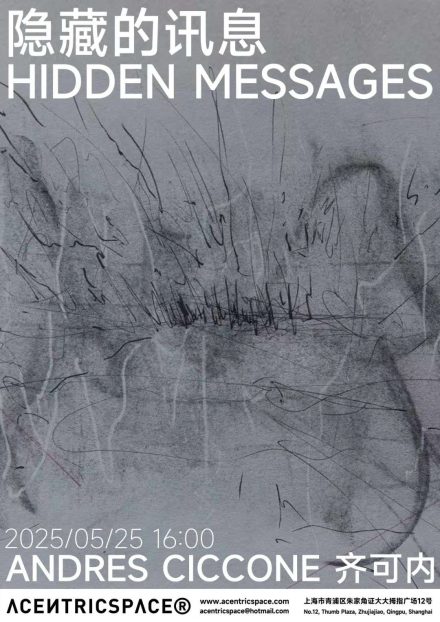
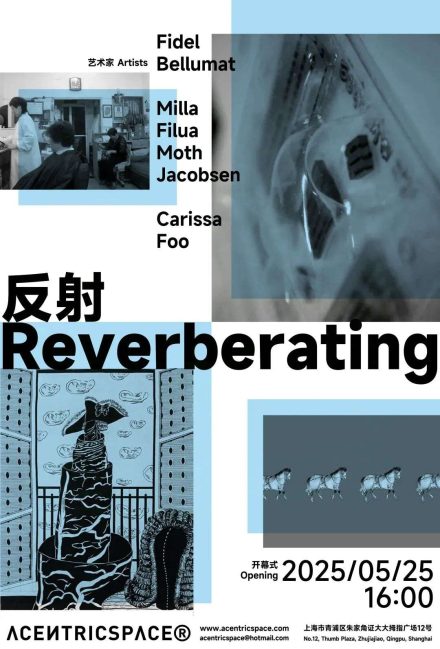



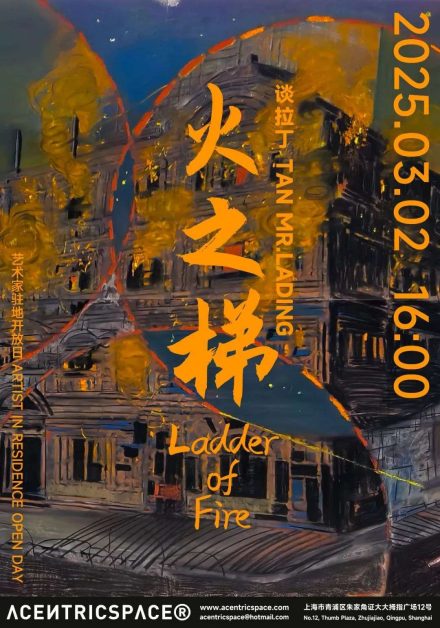
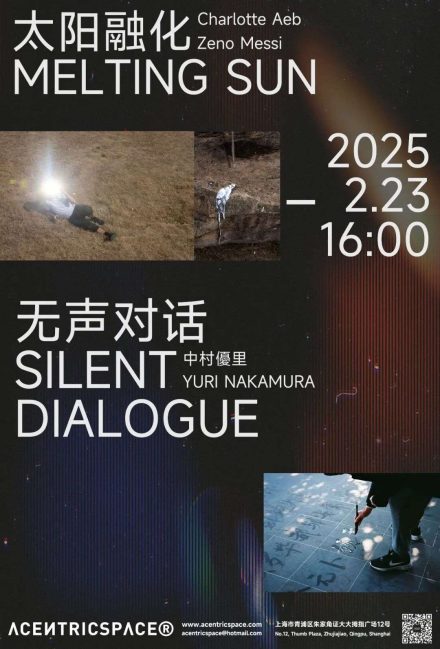
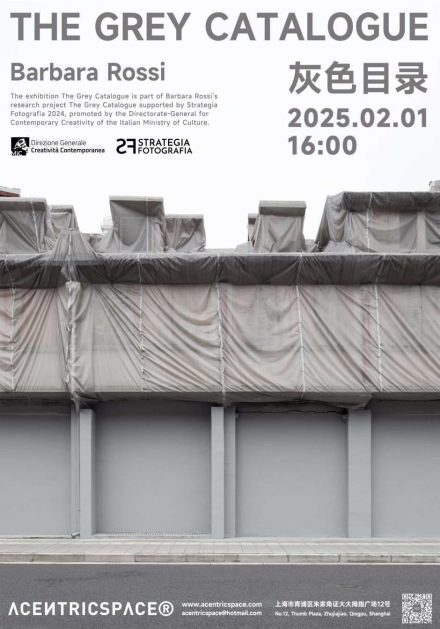


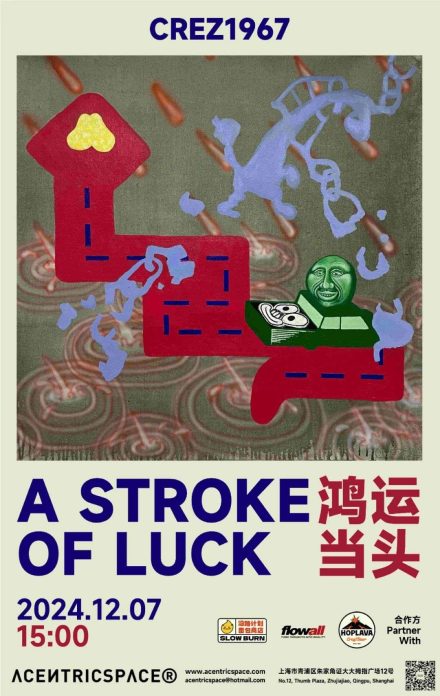

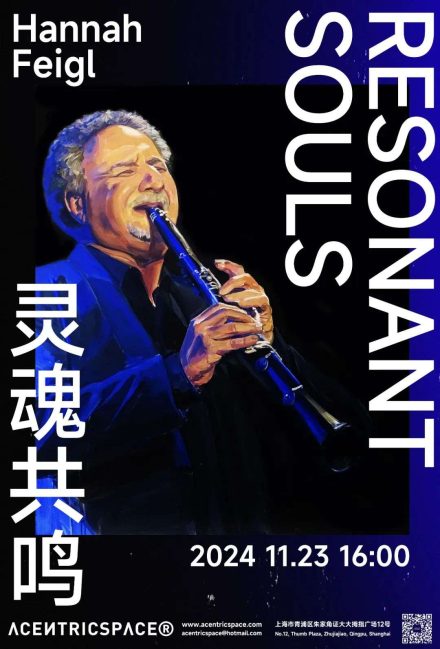
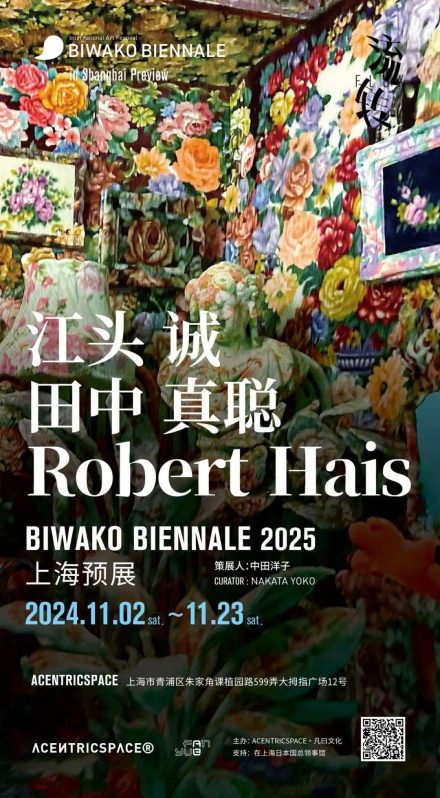
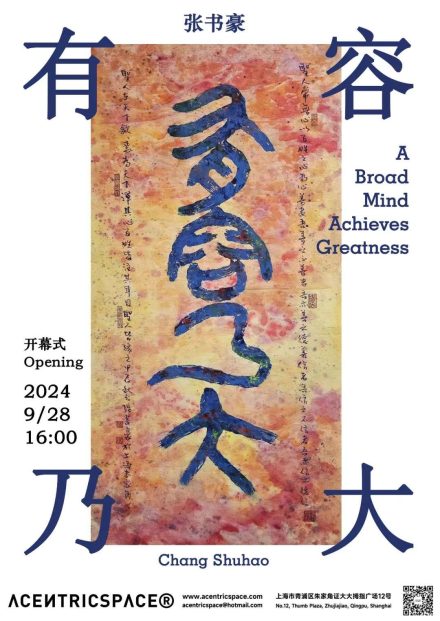
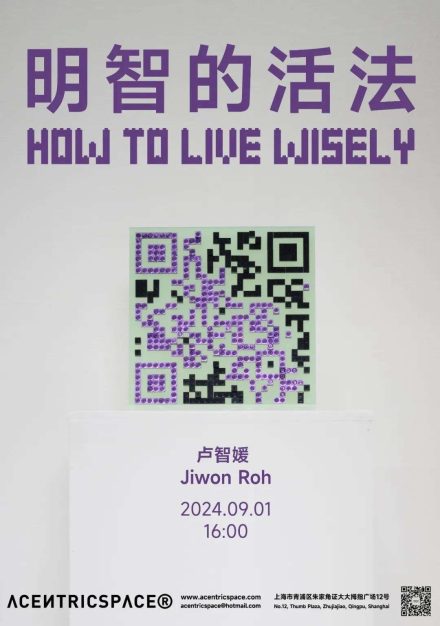


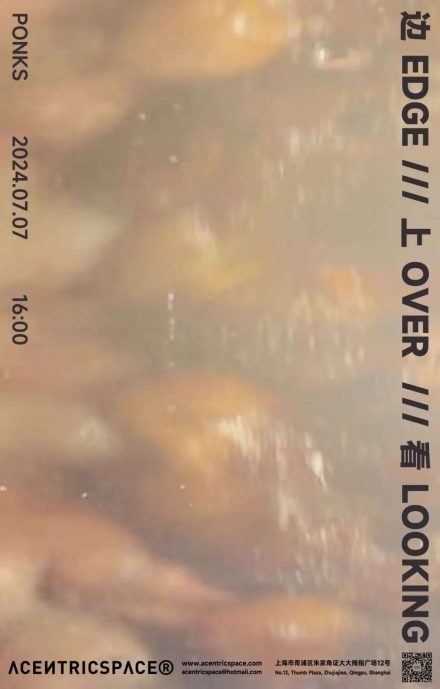
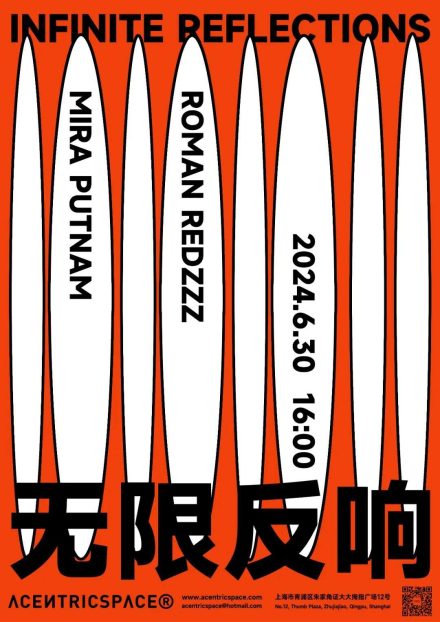
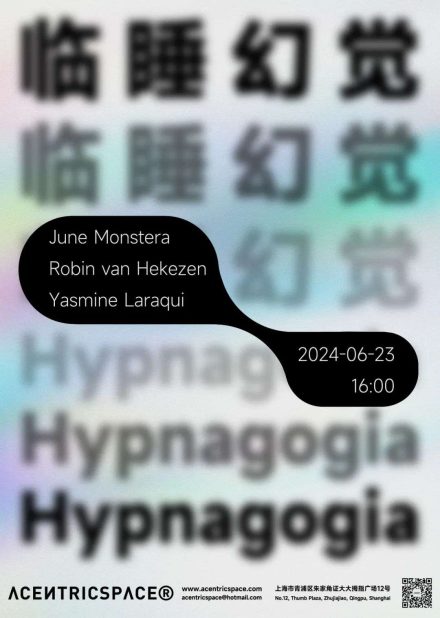
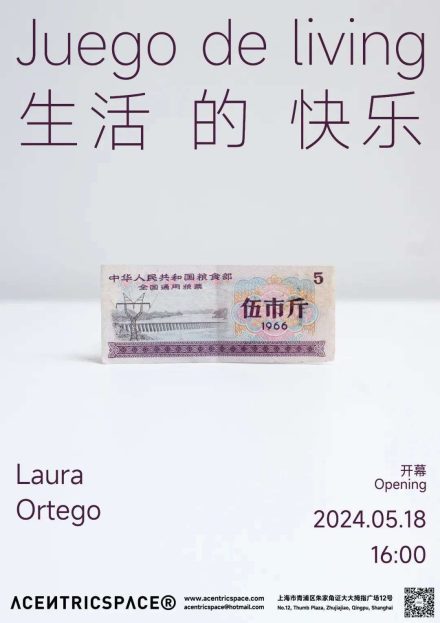


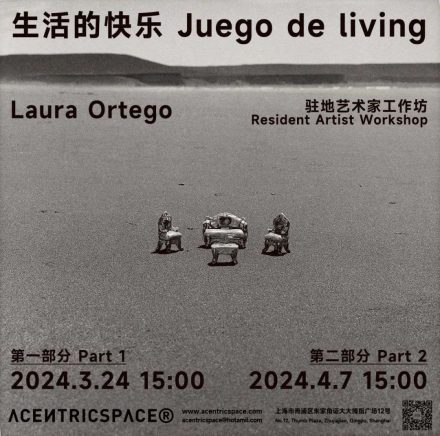





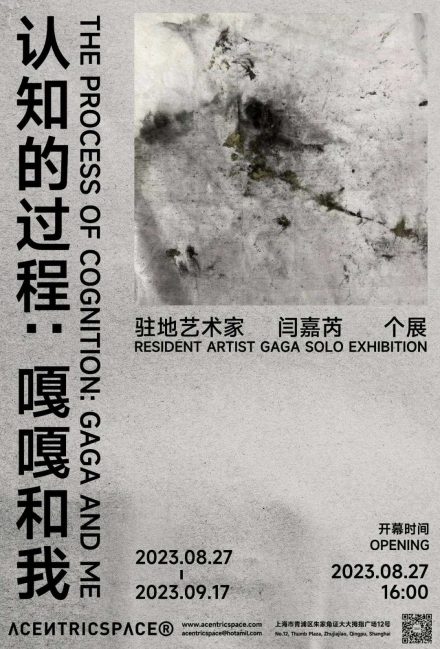

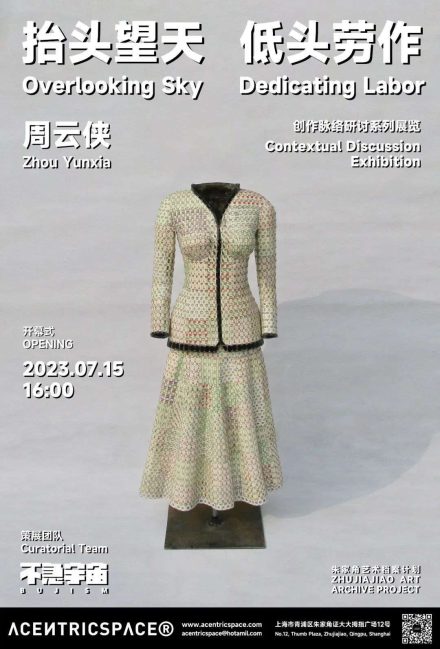



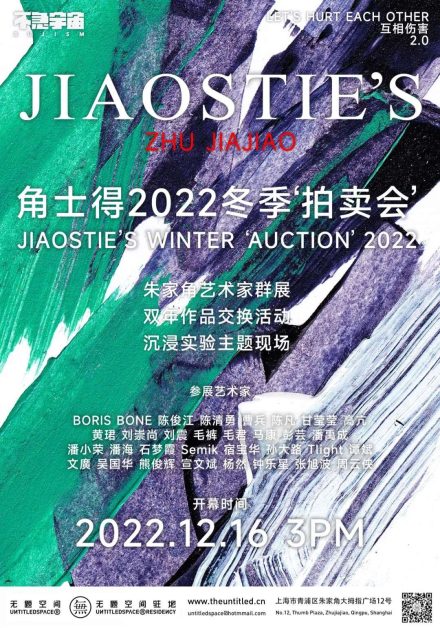
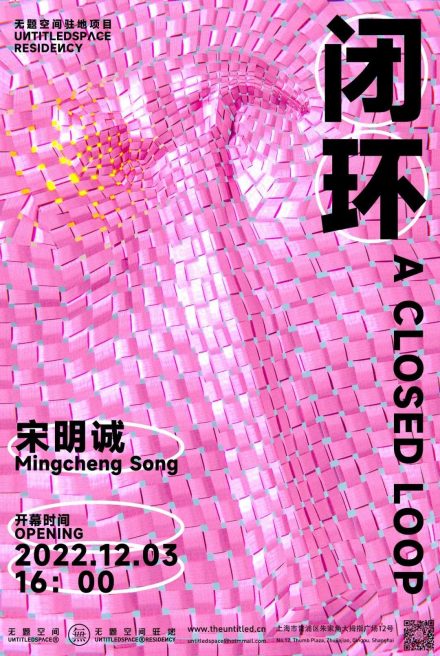





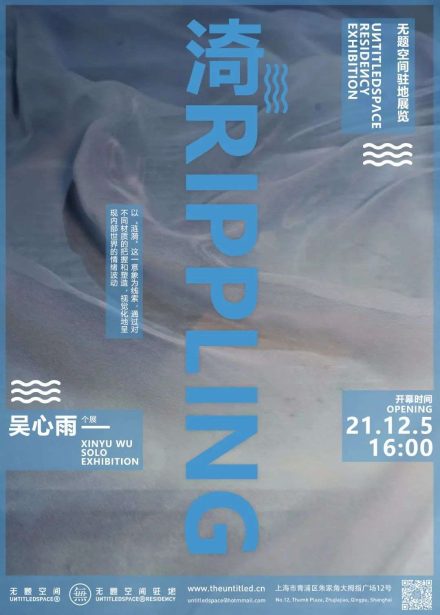
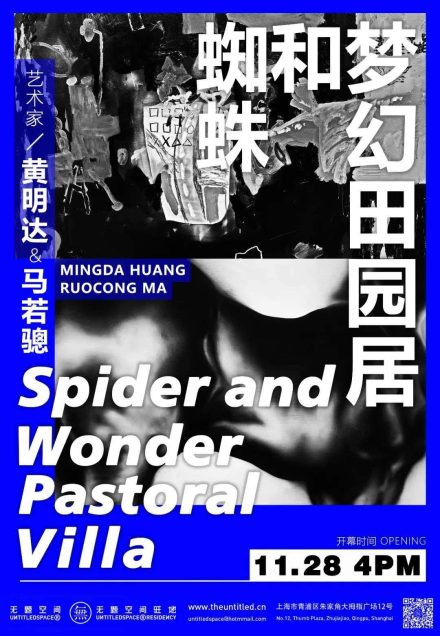
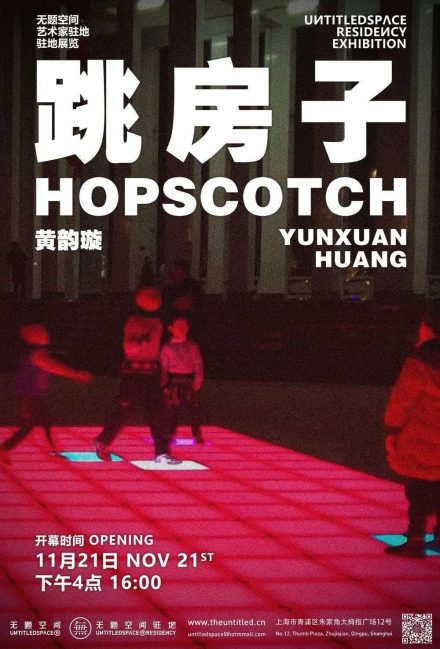
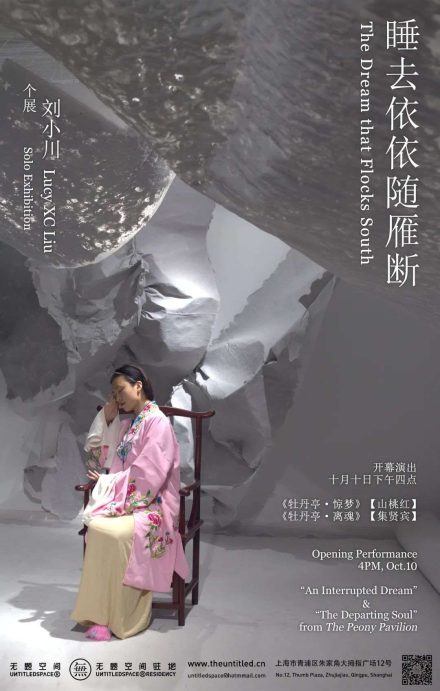


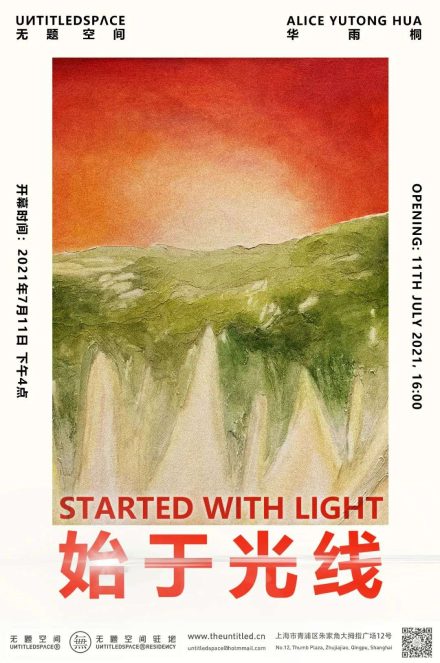





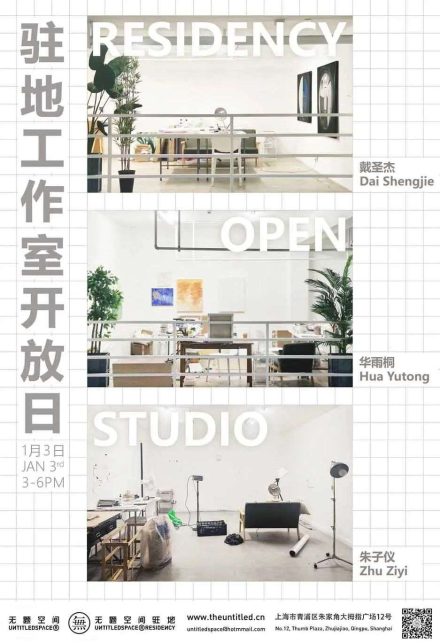
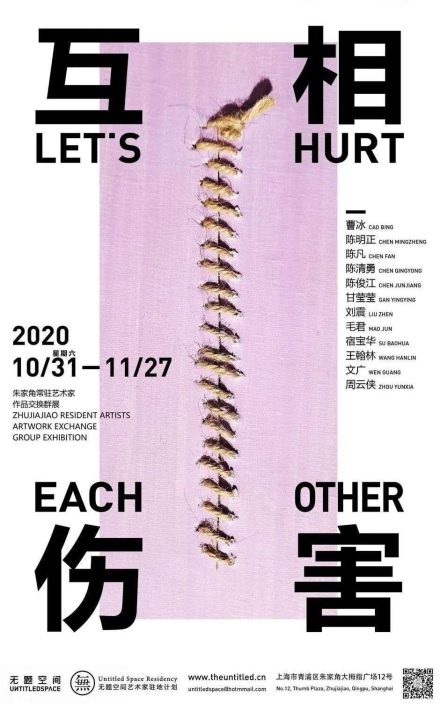

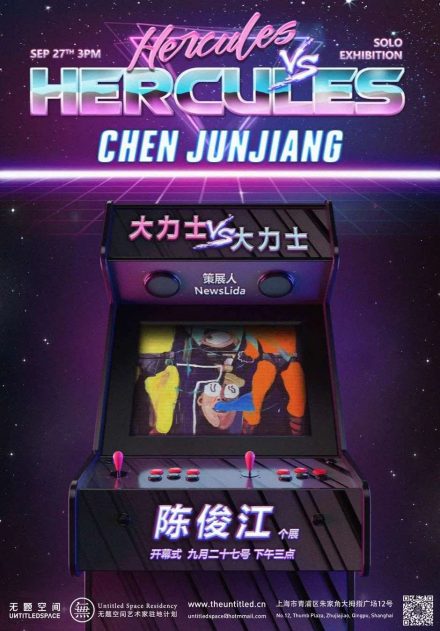


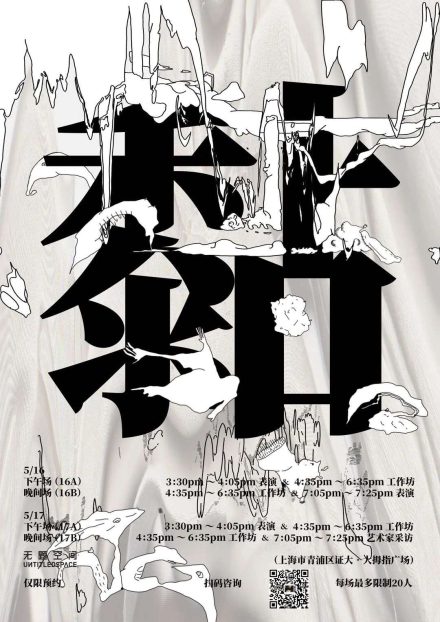
![[超]灾变论 [Hyper-]Catastrophe Theory 舜 Shun](https://www.acentricspace.com/wp-content/uploads/2020/10/wxsync-2024-04-17e42ddfe2087d093ffcdad3f414da34-440x625.jpeg)

